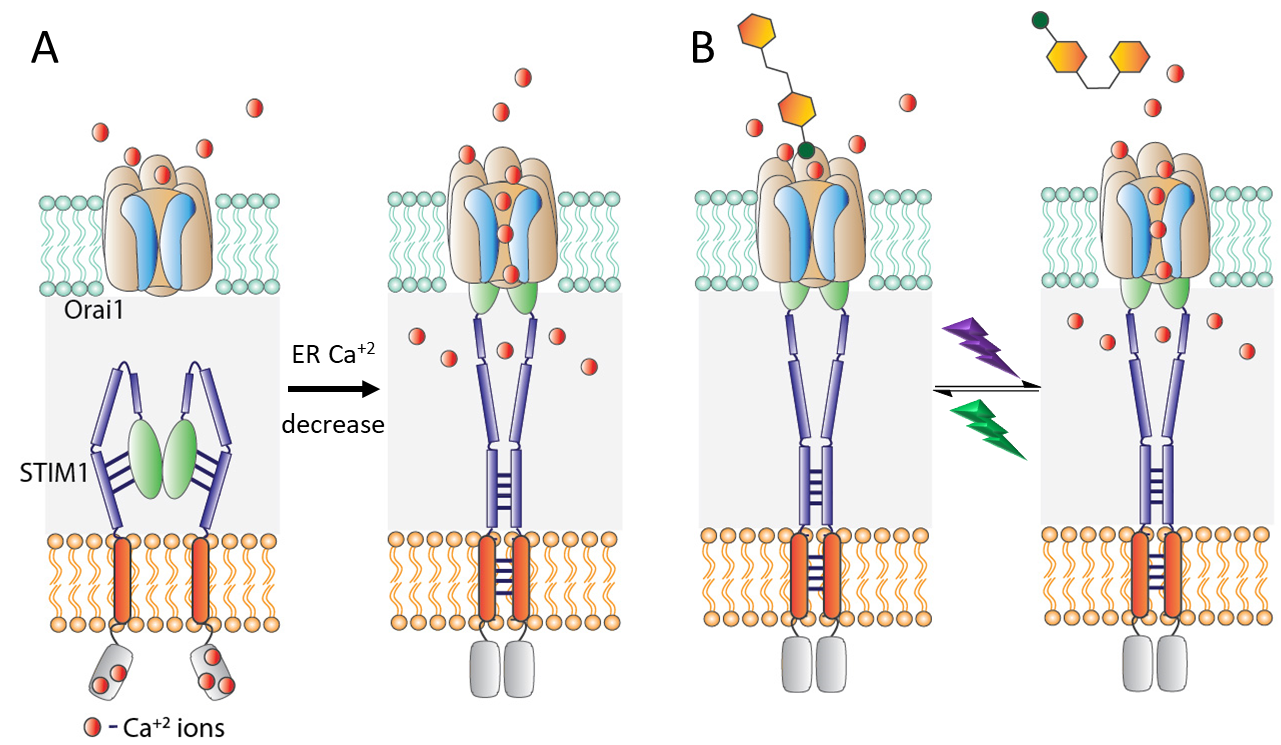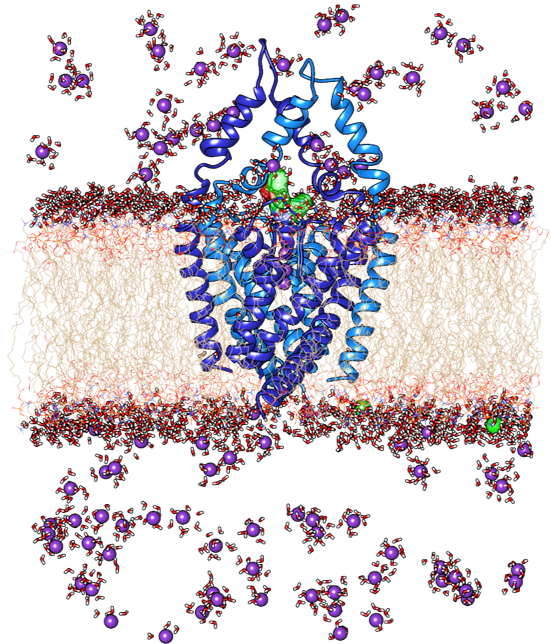Research Interests
Molecular photoswitches reversibly interconvert between isomers when irradiated with different wavelengths of light. At the same time, using ring strain to increase reactivity of a substrate is a well-established technique for completing otherwise sluggish chemical reactions. We are interested in combining these two ideas to develop cyclized photoswitches to reversibly generate ring-strain, and study the activation of functional groups for light-dependent spatiotemporal control of target reactions, in particular for ring-opening polymerizations and for electrocyclzation reactions.


Calcium Release Activated Calcium (CRAC) channels control numerous cellular activities including cell migration, cell proliferation and gene expression. This impressive biomolecular machine has two main components, the calcium sensor protein STIM and the calcium selective ion channel Orai. We aim to develop several variants of photoswitchable CRAC channel inhibitors, both freely diffusible and covalently attached to wild type or genetically modified CRAC channels.
Potassium channels are widely expressed throughout the human body and are found in practically all living things. Further, a subfamily of potassium channels, the Two-Pore-Domain Potassium (K2P) channels which respond to wide variety of stimuli (lipids, pH, voltage, mechanical pressure, phosphorylation and more) to reduce neuronal excitability. We are synthesizing a series of photoswtichable small molecule tools to interrogate K2P channel function.
